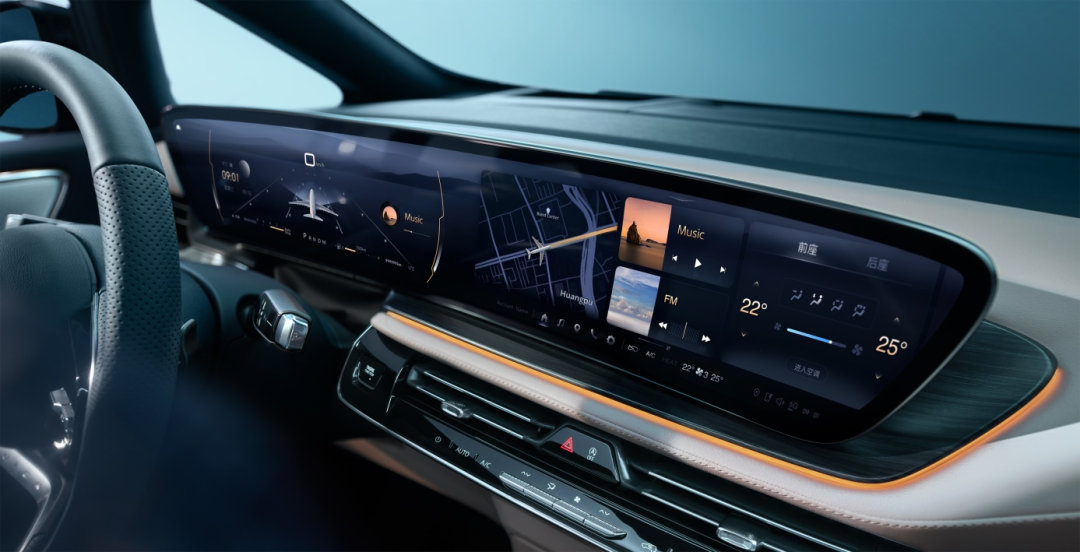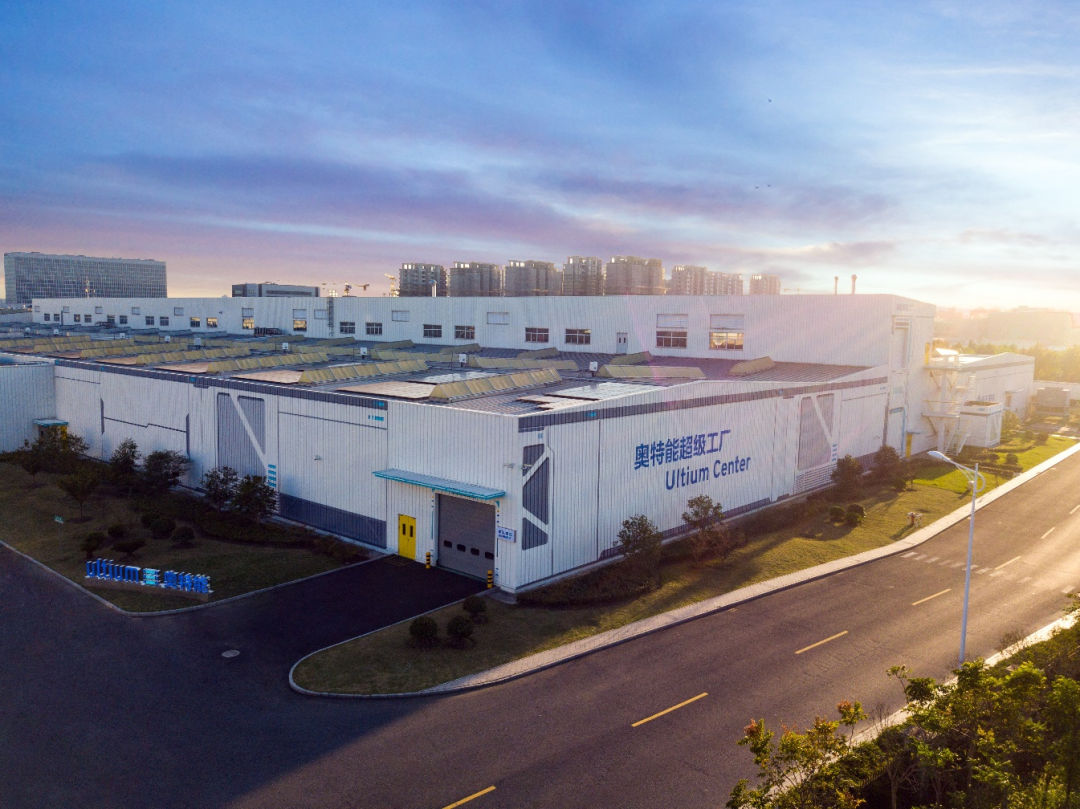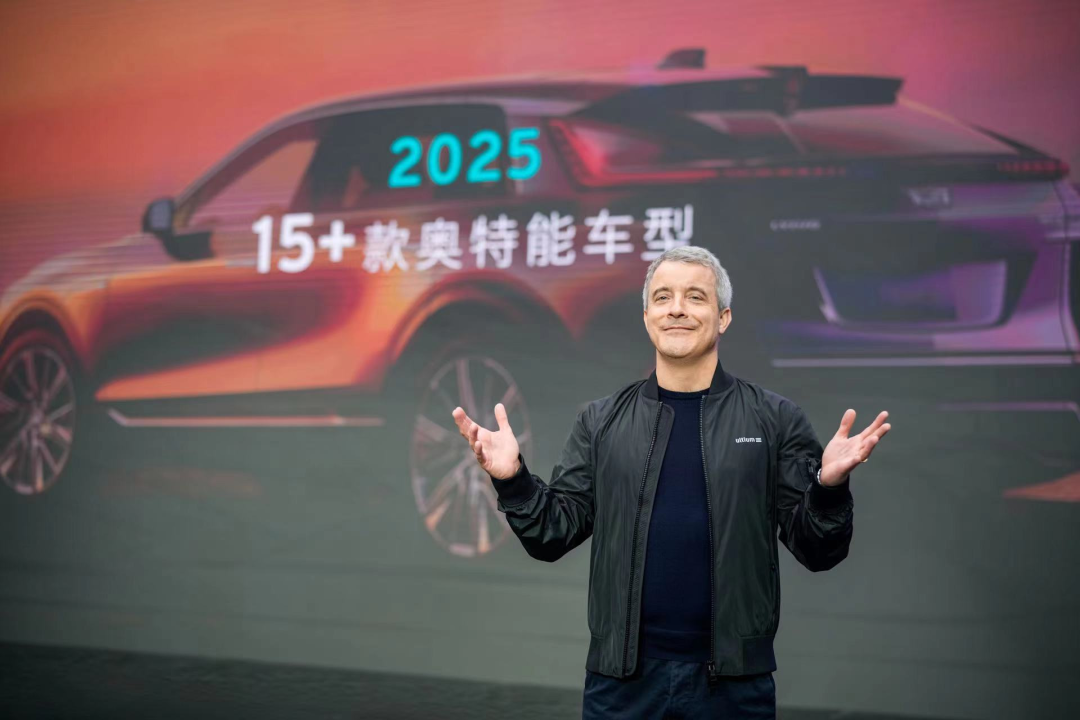Author: Zheng Wen
Editor: Zhou Changxian
It is widely recognized that the pace of electric and intelligent development of joint ventures in the automotive industry has been relatively slow.
According to data from China Association of Automobile Manufacturers (CAAM), as of October 2022, the retail market share of new energy vehicles (NEV) of mainstream domestic brands was 63%, while that of joint venture brands was 3.9%, a YoY decrease of 2.5 percentage points. Tesla held a market share of 2.5%, down by 1.2 percentage points.
The retail penetration rate of NEVs in China has reached 30.2%, a YoY increase of 11 percentage points. Among which, the penetration rate of domestic brands has reached 52.9%, luxury cars 13.6%, and the penetration rate of new energy vehicles of mainstream joint venture brands is only 4.6%. The data shows that the presence of new energy products of joint venture brands in the market is relatively weak.
However, the catching-up speed of joint venture brands in the overall system layout cannot be underestimated. Besides the electrification of Volkswagen in China, General Motors from Detroit has also sounded the horn of its comprehensive counter-offensive.
Recently, General Motors China showcased its latest progress in the Ultium platform, a global electric platform, at the “2022 Technology Outlook Day” held in Shanghai for over a year since its release.
“With the continuous emergence of breakthrough technologies, we are experiencing an unprecedented wave of transformation in the automotive industry.” Mary Barra, Chairman and CEO of General Motors, announced in the form of a video from North America to the Chinese market, “General Motors aspires to lead this transformation.”
Now, where does Mary Barra’s confidence come from? This requires introducing the Ultium platform first.
The Ultium electric vehicle platform can support a variety of battery and electric drive combinations, meeting the requirements of different range, drive forms, and performance products, covering various shapes such as sedans, SUVs, MPVs, and pickup trucks with different wheelbases and sizes.
At present, the Ultium battery pack adopts three combinations: 8 modules, 10 modules, and 12 modules. The module unit size is consistent, and the width and height dimensions of the battery pack are fixed, while the length is flexible, which can satisfy the different sizes and range requirements of different vehicle models through module addition or reduction.“`
The Altair Nanobattery pack uses interfaces that are 100% compatible and has a high parts commonality rate of about 80%. The Altair platform batteries can support flexible chemical formulas, whether it’s the current lithium iron phosphate and ternary lithium batteries or lithium metal batteries and solid-state batteries that may be used in the future.
In addition, the Altair platform can also support different cell packaging forms and layouts. Initially, two different cell capacities will be used in the Chinese market, which can be connected in series or parallel to form two different capacity module units.
The use of a wireless connected battery management system reduces the wiring harness of the Altair battery pack by 90%, which also reduces a large number of connectors and joints, and reduces the risk of traditional wiring aging. Fewer wire harnesses and connectors will also simplify the assembly process and reduce aftersales maintenance difficulty.
In terms of safety, the Altair electric vehicle platform has multiple core battery thermal protection technologies, from the module to the entire pack, including cell compartment thermal insulation walls, heat diffusion suppression technology, integrated liquid cooling system, fire protection design for modules and entire packs, rear large-area explosion-proof valves, arc suppression, and a battery health monitoring system that combines the “car-to-cloud” on both ends.

Using this platform as a basis, its product era is accelerating.
Currently, the Cadillac LYRIQ Rui Ge rear-wheel drive long-range version has begun delivery, and the four-wheel drive performance version will begin delivery in late December; the second vehicle model of this platform will be launched next year. The Cadillac CELESTIQ, which was exhibited at the just-concluded fifth China International Import Expo, will be introduced into China through General Motors’ latest Daolangge lifestyle platform.
Buick’s first Altair platform large five-seat pure electric SUV will debut at the end of the year and be delivered in the first half of next year; the second vehicle model will be launched next year.
Chevrolet’s first Altair platform pure electric concept car FNR-XE also made its global debut on Technology Vision Day, and Chevrolet’s first Altair mass-produced vehicle model will be launched by the end of 2023.
This means that there will be four new Altair platform vehicle models meeting consumers in 2023. In the next two years, SAIC-GM will also launch a new generation of hybrid and plug-in hybrid technologies. In the next five years, more than 10 pure electric products from the three major brands will be launched.
“`To summarize, General Motors’ Ultium platform includes the following electric vehicle lineup:
- Cruise Origin, a self-driving ride-sharing car in North America
- BrightDrop, an all-electric logistics vehicle in North America
- GMC Sierra EV, an electric pick-up truck, an all-electric Hummer pick-up truck and a pure electric SUV in North America
- Chevrolet Silverado EV in North America and China
- Cadillac CELESTIQ and LYRIQ in North America and China
- Chevrolet FNR-XE, an all-electric concept car in China
- Buick Electra-X, an all-electric concept SUV in China
From Cruise Origin, BrightDrop, Pure Electric Hummer and Silverado EV to the recently announced CELESTIQ and GMC Sierra all-electric trucks, the expanding Ultium electric vehicle lineup demonstrates comprehensive breadth and depth.

How far will this technological accumulation extend to the Chinese market?
By the end of 2025, General Motors will launch more than 15 Ultium-based electric vehicle models in China, and next year will introduce a new software platform to accelerate electrification and intelligent networking.
“General Motors is accelerating the launch of electric vehicles based on the Ultium platform in the Chinese market to help the company move towards a pure electric future,” said Julian Blissett, Vice President of General Motors Global and President of General Motors China. “Through global collaboration and local integration, we are committed to bringing Chinese consumers the technology dividends and unprecedented driving experience of the electrification era.”

It is worth highlighting that the Chinese market plays a crucial role in the product development of General Motors in terms of intelligent driving and cockpit.
Firstly, in terms of intelligent cockpit, the new generation VCS intelligent cockpit jointly developed by General Motors and Fung-Yu Automotive Technology Center has been equipped in two car models, Cadillac LYRIQ and Buick Century. On paper, it is equipped with a Qualcomm Snapdragon 8155 chip with a computing power of 105K DMIPS and 12G ultra-high memory.The further plan is that starting from 2023, the VCS intelligent cockpit system will launch a version equipped with Snapdragon 8195 chip and AR-HUD. From 2024, the VCS intelligent cockpit will also usher in hardware upgrades, including rear entertainment system, four-sound area voice command, and car exterior audio.
The cockpit supports intelligent scenario recommendation, automatically distinguishing and recommending different functions and services for users based on scenarios such as commuting, low energy consumption, out-of-town travel, mealtime, and congestion through scenario cards, voice, maps, and other applications.
For example, when traveling out of town, the onboard system can automatically push local weather, road restrictions, food, attractions, hotels, and other information to users through scenario cards, voice, and maps. During mealtime, it recommends nearby restaurants to users; or intelligently recognizes commuting routes and reminds users of traffic conditions when returning home or heading to the office.
The cockpit also supports customized functional combinations. Users can combine navigation, music, ambient lighting, and other functions into a custom scenario and store it in the car device via a voice command on their mobile phones.
For instance, on a workday morning, when the user says “start working” in the car, the onboard system automatically starts navigation to the office, plays music, and turns on the air conditioner. Users can combine nearly 50 functions of the 14 types of automotive modules in any way they like, adding convenience and fun to their driving experience.
Regarding intelligent driving, before the Spring Festival in 2023, SAIC-GM will launch the new generation of Super Cruise on Cadillac Escalade, which will be gradually applied to future Buick and Chevrolet models through OTA remote upgrades.
According to Bo Liti, “Super Cruise is now available on Cadillac CT5 and will be fully expanded to all Cadillac models by the end of 2025. Buick models equipped with Super Cruise will be unveiled this year, followed closely by Chevrolet models.”
The new generation of Super Cruise has lane change and automatic lane change assistance functions, upgrades driver monitoring system eye-tracking function, and richer high-precision map data. The software algorithms have been fully optimized.
Since its introduction into China, Super Cruise has also undergone a series of localization verification, testing, and evaluation work related to Chinese road conditions and typical driving habits of Chinese users. The new generation of Super Cruise has undergone nine major adjustments and optimizations based on the North American version.


Chinese drivers often encounter curved roads and mountain roads. A high-precision mapping system can provide slope and curve angle measurement information. When vehicles pass through tunnels, the system cooperates with software and hardware technologies to ensure stable driving within tunnels no longer than 2 kilometers. The “low-speed lane change” scene has also been optimized through software improvements.
Other improvements include the team’s validation work for drivers of various ages, heights, body proportions, and genders in China, according to the physique and facial features of Asians.
At the same time, SAIC-GM’s new energy production capacity layout and electrification transformation have once again accelerated. After last year’s use of the Shanghai Otnen Super Factory, the Pan Asia Technical Automotive Center’s New Energy Testing Building, and the Guangde Battery Safety Testing Laboratory, the Wuhan Otnen Super Factory will be commissioned by the end of this year.

The Shanghai Otnen Super Factory was officially put into operation in October 2021 in the Pudong New Area of Shanghai. It has upgraded from the original SAIC-GM Power Battery System Development Center and plans to cover product lines for light hybrids, plug-in hybrids, pure electric vehicles, and other new energy vehicle battery systems. In addition, SAIC-GM has achieved more than 95% localization of Otnen platform parts procurement.
In terms of sales channels and infrastructure, by the end of this year, 26 Cadillac IQ Spaces will be opened in 14 major cities, and 100 Cadillac IQ zones will open in 50 cities. By 2023, Buick’s pure electric city exhibition halls are expected to reach 58, and new energy zones will exceed 600. The self-built ultra-fast charging stations will reach 1500 by the end of 2023, along with cooperation with third-party operators.
“SAIC-GM is constantly increasing strategic investment. Based on a total investment plan of RMB 50 billion announced last year, it has increased another RMB 20 billion. The total investment in new technologies such as electrification and intelligent networking will reach RMB 70 billion by 2025,” said SAIC-GM General Manager Wang Yongqing.”The new future of electrification and intelligence, belonging to SAIC-GM, is coming.”
This article is a translation by ChatGPT of a Chinese report from 42HOW. If you have any questions about it, please email bd@42how.com.
